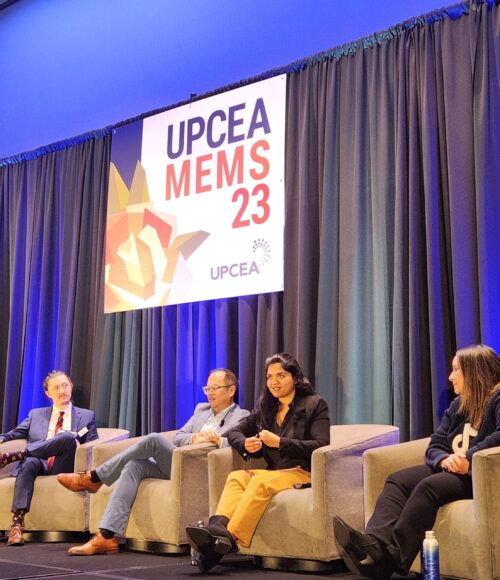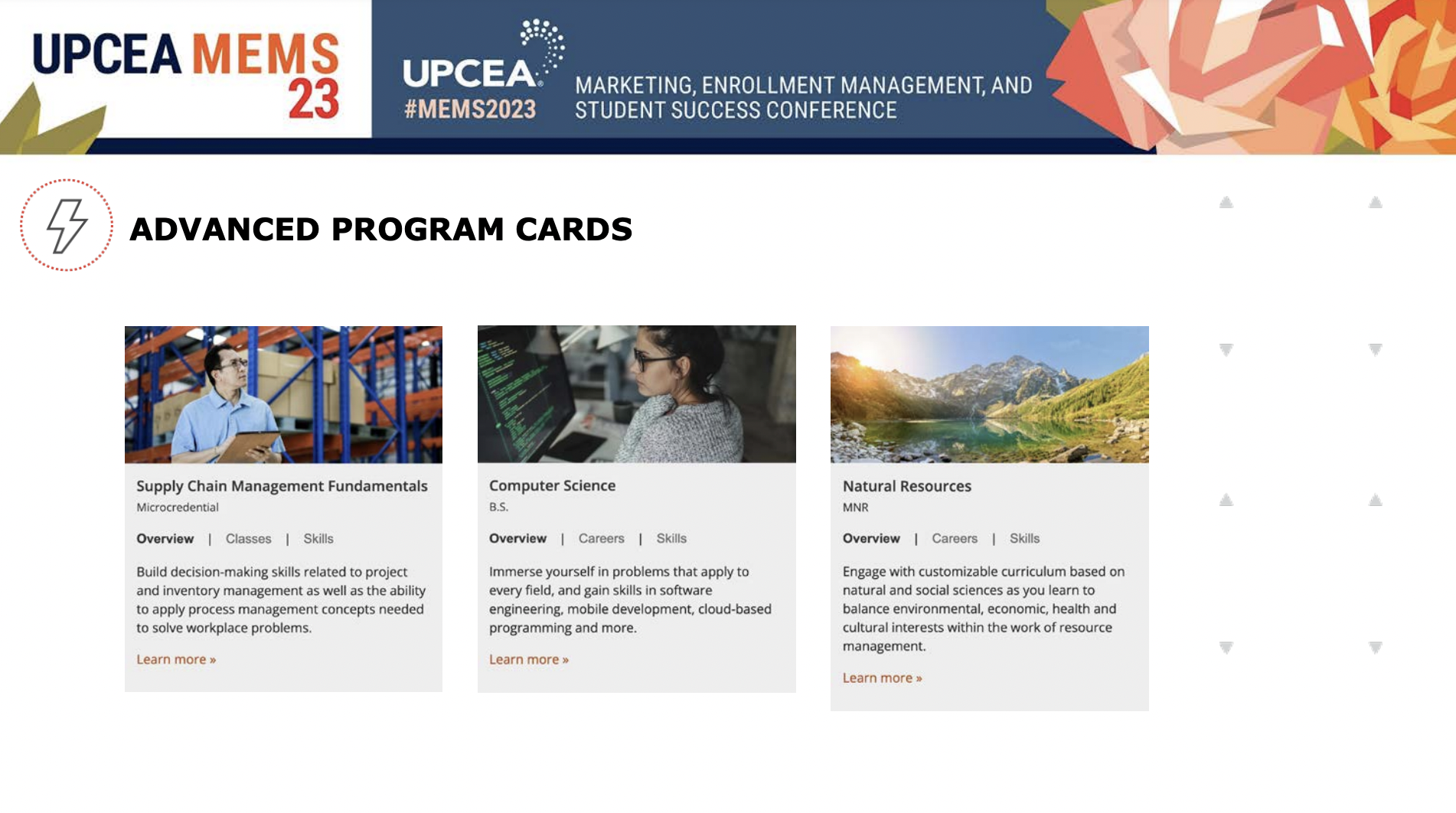UPCEA MEMS Conference: AI, Authenticity, Limitations of Measurement

UPCEA MEMS Conference: AI, Authenticity, Limitations of Measurement
I’m pleased to share that the latest UPCEA MEMS: Marketing, Enrollment Management, and Student Success conference was as satisfying as always.
One thing I love about this conference, hosted by UPCEA, is that it attracts a broad cross-section of higher education professionals: everyone from deans and provosts to higher ed marketing and enrollment management specialists. The sessions are inclusive of all perspectives and areas of interest, and they inevitably lead to some fascinating conversations.
If you missed the event, here’s a quick recap of some of the highlights.
AI and Authenticity
AI is the elephant in the room at every conference these days, and MEMS was no exception. Higher education leaders recognize that AI is here to stay but are hesitant to embrace it fully.
Higher ed marketing professionals question how to leverage AI-generated content while maintaining authenticity. (As AI blurs the line between what’s real and what’s not, it’s no big surprise that “authentic” is Merriam-Webster’s word of the year.) I heard claims, for example, that AI is capable of receiving a prompt and generating content in a school’s authentic voice. AI has a lot to show us, but based on its capabilities today, I remain skeptical.
On the enrollment side, the question is how to integrate AI effectively at scale without negatively impacting a prospective student’s experience. Schools using chatbots to assist enrollment management teams must determine where in the process the AI ends and a human takes over.
Shrinking Attention Spans
With so many stimuli in front of us at any given time and AI dramatically increasing the capabilities of content output, people’s attention spans are shorter than ever. It certainly doesn’t help that we’re approaching a contentious election year where it will be even harder to break through the noise.
Schools seeking to grab prospective students’ limited attention will need to find creative ways to communicate their value propositions and differentiators quickly and effectively.
One interesting and specific solution came from the session I facilitated with colleagues from Oregon State University and Stanford Online. These “program cards” can be used on websites to capture attention and convey just enough information about a program. A user doesn’t have to navigate to a new web page unless they explicitly want to learn more.

Websites aren’t the only place where schools are vying for attention, however. Advertising, particularly in the crowded landscape of this year, needs to be personalized to prospective students with creative that stands out.
Student Retention and Persistence
Persistence was a big topic of discussion among MEMS attendees in enrollment management. Many higher ed leaders acknowledge the critical role student success coaches can play in helping students persist.
I was thrilled to hear talk of developing coaching certificates and finding ways to integrate student success coaches at more schools. Ideally, coaches should be accessible to all students, whether they’re on campus for a 4-year program, pursuing an online master’s degree, or even enrolled in a certificate program composed of microcredentials.
This is another area where AI coaching can potentially provide support supplemented by human interaction.
Limitations of Measurement
I had the opportunity to moderate a panel called “The Measure of Marketing” about frameworks for building marketing strategies and communicating impact. I like to say that higher ed is moving into the “teenage years” of measurement. What I mean is that we’re experiencing some growing pains in this area.
During the last decade or two, higher ed marketers have assumed that they can measure anything and everything. And while that’s true to an extent, there are caveats: it’s not always easy to 1) measure accurately and 2) generate actionable insights from measurement.
For instance, it can be difficult to discern whether data is authentic (there’s that word again). You may have X amount of visitors to your website, but some of those visitors are likely bots. How many? It’s hard to say, but it does illustrate the point that, as is often the case in higher ed marketing, quantity of traffic does not equate to quality of leads.
One of MindMax’s core values is to provide actionable insights; if I’m being transparent, it’s the hardest value for us to live up to. Data is predictive—not definitive. Sometimes, the data alone doesn’t tell the full story, and higher ed leaders must learn to become comfortable making decisions with imperfect or incomplete information.
That’s a Wrap on Higher Ed Conference Season
With the close of UPCEA MEMS and the holidays upon us, the 2023 ed conference season comes to a close. It’s been a real privilege to attend this year’s events! Check out the MindMax blog for my other conference recaps, and I hope to see you at some of these events next year.